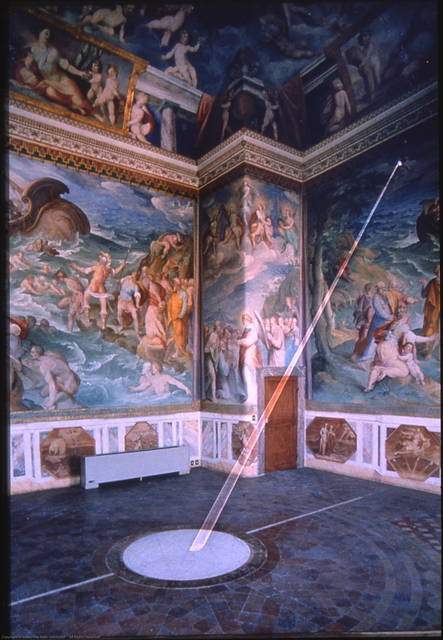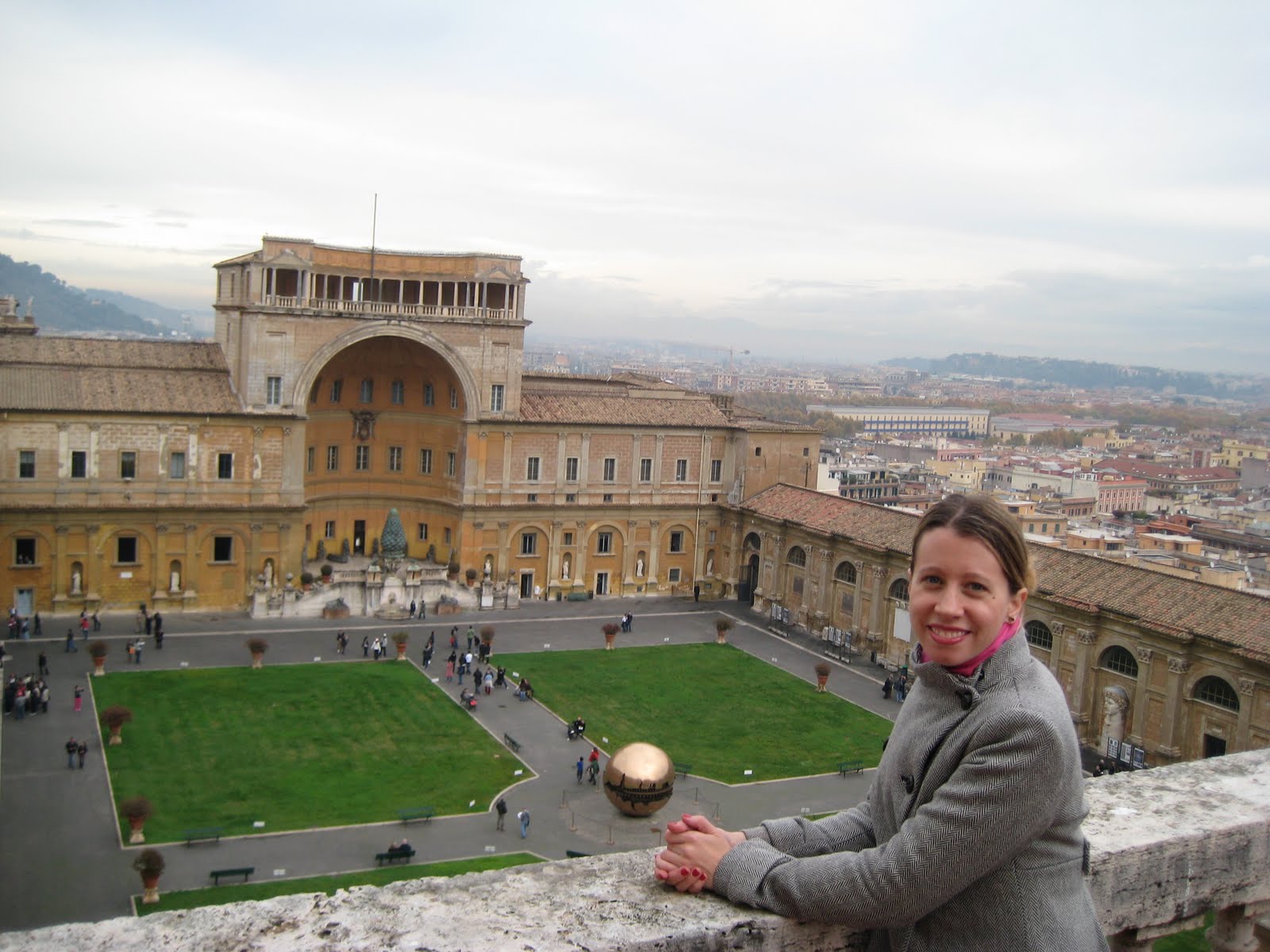The Tower of Winds and the Gregorian Calendar
While strolling down the Gallery of Maps in the Vatican Museums, a seemingly interminable corridor displaying frescoed maps of the Italian landscape, it is easy to feel disoriented. Dizzy, even. The gallery is 395 feet long, over the length of a US football field, and contains forty brightly painted topographical maps of the regions of Italy, each one embellished with intricate details such as compasses, sea creatures and ships. The ceiling is no less spectacular, a barrel vault decorated with stucco, gold leaf, grotesques, and frescoes depicting stories from the lives of the saints. Windows to the right afford breathtaking views of the Vatican Gardens. It is almost too much for the eye to take in.
Little wonder, then, that visitors rarely are aware of the marvel that is right above their heads. At the north side of the gallery rises the little-known Tower of the Winds, one of the highest points in Vatican City. It was erected between 1578 and 1580 by Ottaviano Mascherino, the Bolognese architect who also designed the Gallery of Maps, built at the same time. The Tower of the Winds takes its name from the anemoscope it possesses, an instrument that gauges the direction of the wind, designed by Ignazio Danti, the papal cosmographer. However, despite its name, Pope Gregory XIII commissioned the tower for the sole purpose of determining the extent of the inaccuracy of the Julian Calendar that had first come to light during the Council of Trent in 1563.
Since the First Council of Nicaea in 325, Easter has been celebrated on the first Sunday after the first full moon after the spring equinox (that is, March 21st, when day and night are exactly the same length). At the height of the Counter Reformation, one of many reaffirmations made during the Council of Trent was the necessity of celebrating Easter on the correct date, at risk of ex-communication. This was primarily done to further separate the Catholic Church from the Orthodox Church, which had a different process of determining the date of Easter. But when it became clear that the calendar was incorrect, the Pope himself became essentially guilty of a crime punishable by ex-communication.
In order to address this issue, the Tower of Winds was built, complete with a floor meridian, also the work of Danti, to correctly identify the spring equinox. The interior of the two storey tower is lavishly frescoed by landscape painters Paul and Matthijs Bril, brothers from Antwerp, and Nicolò Circignani, also known as “Pomarancio”. On the lower of the two levels, the windowless Meridian Room, a small hole in the south wall allows a ray of sunlight to project onto the marble meridian on the floor. At noon on the spring equinox, the ray should fall in a specific line. When it was tested for the first time, in 1582, it occurred on March 11th instead of March 21st. The calendar was ten days off.
The cause of this inaccuracy was a tiny miscalculation. According to the Julian calendar, which was in use from the time of Julius Caesar until 1582, leap year was observed every year divisible by four, except for centurial years (1300, 1400, etc.) Under this system, each year was, on average, roughly two hours too long. After nearly sixteen hundred years, these extra hours added up to ten days. Pope Gregory adjusted the calendar to observe leap year also in any centurial year divisible by 400 (1600, 2000, etc). To make the change complete, of course, those excess ten days had to be eliminated. This was done in October of 1582, when October 4th was followed by October 15th.
A century later, the Tower of Winds became the temporary residence of Queen Christina of Sweden, who gave up her throne to convert to Catholicism and was welcomed to live in the Vatican by Pope Alexander VII. Another two hundred years later, it became the first seat of the Specola Vaticana (Vatican Observatory) under Pope Leo XIII, at which time the roof was turned into a terrace to facilitate astronomical observations.
Although today the Tower of Winds is no longer in use, nor open to the public, I was fortunate enough to visit it in 2008, thanks to the kindness of a Vatican guard who is very dear to my heart. It was an incredible experience, especially knowing that so few people have ever had a chance to see it. No less thrilling was a completely new view of the Cortile della Pigna.




